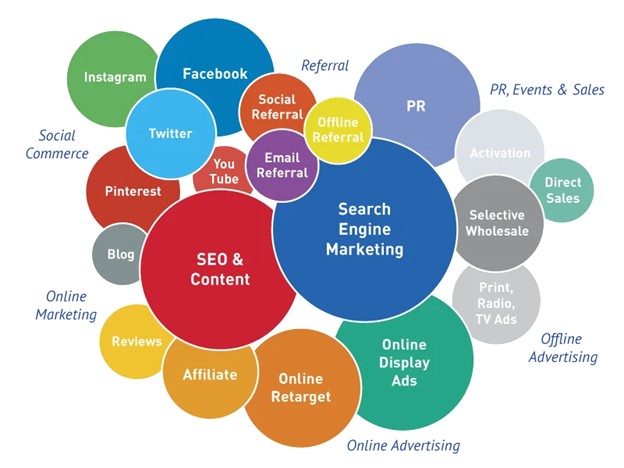As your company grows, you’re likely hearing from your IT and marketing teams that they want to add more tools to your company’s arsenal. However, while all of their ideas sound promising, how do you know which tools will add the most value without redirecting undue resources away from your other marketing efforts..
We are often asked by clients what tools and platforms they really need. Our short answer is “you just need the tools that help you with the tasks that are taking all your time”. Simply put, pay for tools that help save time or do things that you hate or risk having dozens of resources that you’ll never or rarely use. You need to pick a few, good tools and teach your team to make the most of them.
Marketing tools to consider adding to your arsenal
We don’t think you need a huge array of marketing tools and platforms to be successful. In fact, we’ve found that using too many platforms can dilute your efforts and ultimately your profits. We don’t ever recommend using tools simply because they are the new, shiny thing or because someone read something about them in an industry journal. Having said that, we’ll profile a few of the most commonly-used marketing tools and platforms, so you can judge which ones might work best for you and your team.
1. Email and Social Media Marketing
Tools like SFDC, Adobe Marketing Cloud and MailChimp can help you get the most from your marketing messages, whether those are email messages or social media posts. For example, with MailChimp, you can create targeted email marketing lists, schedule messages, personalize your messages and easily track your open and click-through rates.
Salesforce software (SFDC) automates your digital marketing workflow using AI technology. This tool can send personalized messages for the right occasion, such as when a customer makes a purchase or when an order has shipped. It can also help keep track of potential customers in the sales cycle and send them the appropriate message for each stage. Great on paper, but you still need to set it all up.
2. SEO, Ads and Analytics
SEO, ads and analytics taken together are the art and science of getting your company noticed amidst the sea of other companies competing on the web for your customer’s business. Many of these functions can also be automated to give you the information you need to track your goals, reach your customers and keep your ads atop search results.
Often, the tools you use now have reporting features built-in, but do not share the reporting in a clear and easy manner. Understanding what each tool offers and how you can optimize them is sometimes better than moving to a different tool.
3. CDN
Content delivery networks make sure that your content loads quickly and completely. After all, the average time a site visitor will wait for a page to load is less than five seconds. If you can’t grab their attention quickly, none of the rest of your marketing efforts will even get a chance to wow them. Platforms like CloudFlare and StackPath will make sure that you have the power you need behind your web presence.
4. ABM
ABM, or account-based marketing, involves focusing your energy and resources on those customers who make the most money for you or otherwise stand to benefit your company the most. Demandbase, 6sense and Terminus are marketing automation tools that can streamline this process by posting ads targeted to your preferred demographics and using algorithms to find finely-targeted customers for your products and services.
Having the right, carefully-selected tools helps you get the most out of marketing investment. By using tools to automate many of the tasks your team used to do themselves, you can free up your talent to be creative and to interact with customers. It’s good for the company, for your customers, and for your team.










